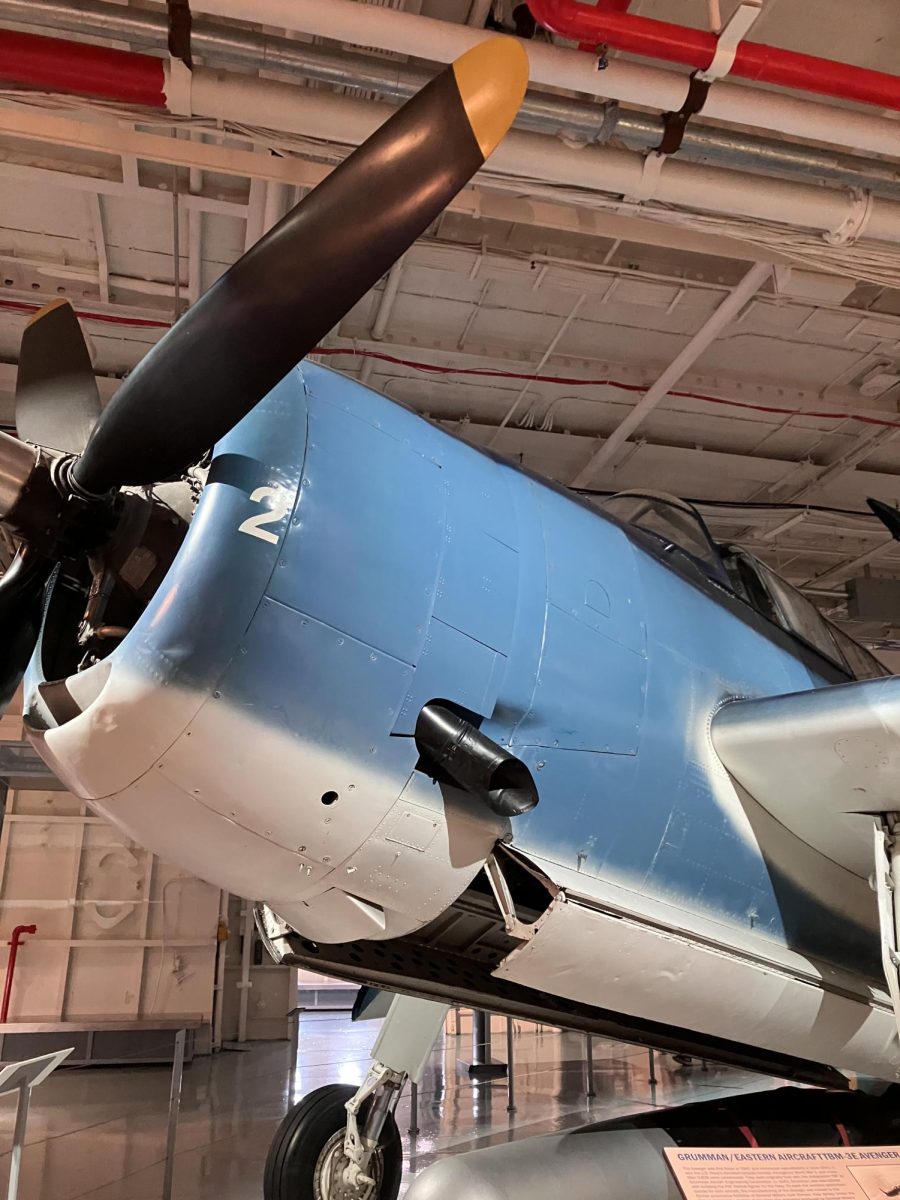I inched nervously onto the catwalk and peered into the cavernous bomb bay. I could almost hear the rattling of unreleased bombs and sense the crew’s unease, with 100,000 pounds of explosives and fuel packed into a hunk of metal, navigating through dangerous Nazi Germany airspace. Up front, as I looked through the cockpit windows, imagining the creaking metal and droning propellers. I felt the tension the pilots must have felt in the cramped, stuffy space.
I was in third grade, and my dad had taken me and my sister on a surprise adventure. He had learned that our local airport was hosting a World War II plane exhibit and airshow, featuring vintage aircraft the Denver Post called “the sole remaining examples still flying anywhere in the world.” The airshow was part of the Wings of Freedom Tour, sponsored by the Collings Foundation. The best part: it was a 15 minute drive from home, at Centennial Airport.
Anyone could see the awestruck glint in my eye as I saw the P-51 Mustang “Betty Jane” cruising over the horizon at the airshow. I could feel the exhilaration of pure speed as it hurtled above the airport and the pull of G when it barrel rolled through the blue sky.
As clearly as I remember the planes, I also remember having the place utterly to ourselves. For just $12, anyone could have walked among pieces of history, but no one came. These legendary machines were being ignored.
The B-24 bomber that captivated me was called “Witchcraft.” Below the nose, decorated with a wild witch on her broomstick, I saw long rows of yellow bomb symbols representing successful missions. I envisioned crew members painting them and felt connected to a group of men who fought and died eight decades ago. That bomber inspired a love for WWII aviation history that has not abated. My sister, meanwhile, took a particular liking to the next plane over on the tarmac, the B-17 “Nine O Nine.”
“Nine O Nine” crashed near Hartford, Connecticut three years later in a failed takeoff attempt.
The Collings Foundation suspended the tour after the crash. “Our thoughts and prayers are with those who were on that flight and we will be forever grateful to the heroic efforts of the first responders at Bradley [Airport],” stated the Foundation after the incident.
The COVID-19 pandemic held down the suspension until Dec. 4, 2023, when the Foundation announced it was canceling the Wings of Freedom tour. A tour of treasured warbirds, ending. It was devastating news for me and other members of the aviation community. One of my (and surely many others) most cherished memories, muffled by the awful disaster.
But that was only one catastrophe in a series of many.
Two years before the “Nine O Nine” tragedy, the beloved B-17 “Liberty Belle” had caught fire midair and plummeted to the ground in Illinois. Just last year, another B-17, “Texas Raiders,” collided with a P-63 Kingcobra in a Dallas airshow. Six were killed in the heartbreaking accident where each destroyed piece of history also represented lives lost. Another aircraft, the small fighter P-40 Warhawk, crashed in Montana in June 2023, killing its pilot.
Many in my generation experience WWII virtually. They play games like “Call of Duty” or watch enthralling movies like Dunkirk. But seeing combat through a screen can’t convey the anxiety, stress, and fear of war. It can’t match the sensory experience of climbing into a once-powerful flying machine. How can slouching on a couch to binge war movies possibly create a connection between 2024 and 1942?
The saddening cancellation of the tour will unfortunately further this disconnect.
Modern education doesn’t help either. Drab classrooms and droning textbooks don’t make students yearn to learn more.
Even as we lose the storied warbirds, the generation that piloted them is slipping away too. Soon, we will have no direct connection to this chapter of history. We must treasure the chances remaining, to see these fragile relics and hear from the airmen who flew them.
Good places to go to learn about these planes include D.C.’s Smithsonian National Air and Space Museum, New York’s Intrepid Museum (which is housed on a real aircraft carrier), or Dayton’s National Museum of the US Air Force. Colorado has good options too, like Colorado Springs’ National Museum of World War II Aviation or Denver’s Wings of the Rockies Air and Space Museum.
Unquestionably, WWII has fascinated every generation since it ended. But we are losing touch with the reality of war. The chance to tour “Witchcraft” taught me more than any video game, textbook, or movie could have. When planes crash, the chance to encounter history firsthand crashes with them.









RP | Feb 17, 2024 at 3:15 PM
Loved this article!